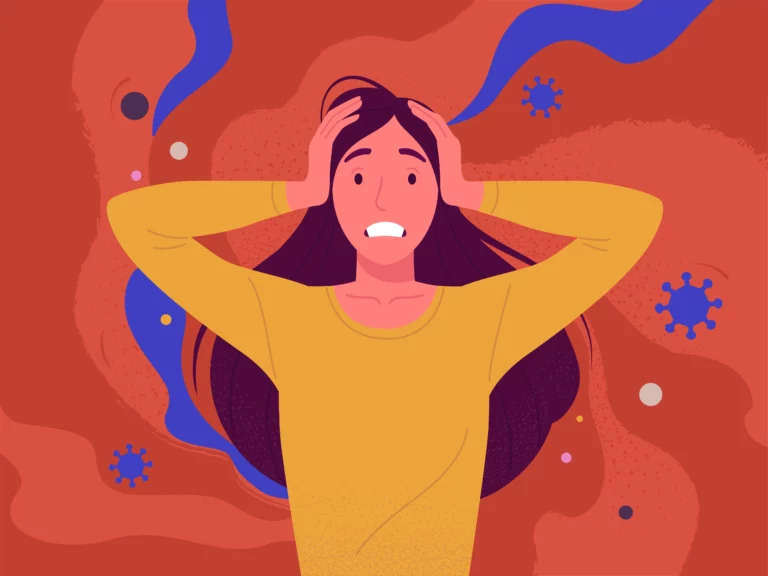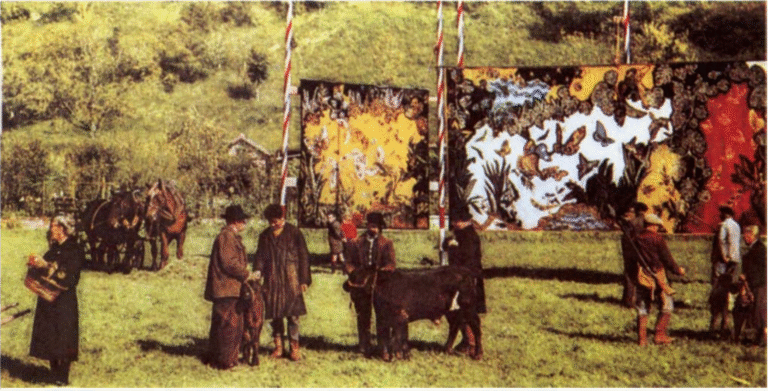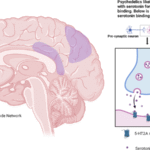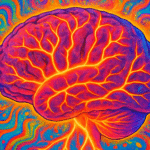Women experience significantly higher rates of internalizing disorders—particularly anxiety, depression, and trauma‐related conditions—due to an interplay of hormonal fluctuations, genetic predispositions, psychosocial stressors, and sociocultural dynamics. Addressing these gendered vulnerabilities demands tailored prevention, early intervention, and policies that mitigate women’s unique risk factors.
Introduction
Mental health disorders affect individuals across the lifespan and all walks of life. Yet, a consistent global pattern emerges: women bear a disproportionate burden of internalizing disorders, including anxiety, depression, and post traumatic stress disorder (PTSD). According to World Health Organization estimates, 6% of women worldwide live with depression, compared to 4% of men. Lifetime PTSD prevalence is nearly 12% among women versus 6% among men. Understanding why women are more susceptible is critical for crafting effective, gender‐sensitive mental health strategies.
This in‐depth exploration examines:
- Comparative rates of anxiety, depression, and trauma‐related disorders by gender
- Biological underpinnings: hormones, genetics, and neurobiology
- Psychosocial stressors: life roles, trauma exposure, and coping
- Sociocultural forces: stigma, access to care, and gender norms
- Integrated interventions and policy implications
Gender Disparities in Mental Health: The Numbers
Anxiety Disorders
In a nationally representative study, women’s point prevalence of anxiety disorders was 21.9%, nearly double the 11.3%observed among men (adjusted odds ratio 2.18). Similar gaps appear in U.S. data reporting 20.2% of women versus 15.0% of men experiencing significant anxiety symptoms in a two‐week period in 2024.
Depressive Disorders
The Nepal Demographic and Health Survey (2022) found women’s depression prevalence at 5.4%, over three times men’s 1.7% (aOR 3.21). Globally, the WHO estimates adult depression at 6% in women versus 4% in men.
Trauma‐Related Conditions (PTSD)
Women face roughly two to three times the lifetime PTSD risk of men, with prevalence estimates of 10–12% in women versus 5–6% in men. U.S. data from the National Epidemiologic Survey on Alcohol and Related Conditions (NESARC‐III) report lifetime PTSD at 8.0% for women and 4.1% for men.
2. Biological Foundations
Hormonal Fluctuations
- Reproductive Hormones: Estrogen and progesterone modulate serotonin, dopamine, and GABA systems. Fluctuations across the menstrual cycle, postpartum period, and menopause can trigger mood swings, heightened anxiety, and depressive episodes.
- Pregnancy and Postpartum: Up to 20% of new mothers develop postpartum depression, linked to abrupt hormonal shifts and inflammatory responses.
Genetic and Epigenetic Factors
- Heritability: Twin studies indicate heritability estimates for depression and anxiety range 30–40%, with some evidence of sex‐specific genetic risk.
- Epigenetic Mechanisms: Early‐life adversity may epigenetically program stress‐response genes (e.g., the glucocorticoid receptor), amplifying HPA‐axis reactivity in women following trauma.
Neurobiological Differences
- Brain Structure and Connectivity: Women exhibit greater limbic system reactivity—particularly in the amygdala and hippocampus—leading to intensified emotional processing and rumination.
- Stress Response: Women demonstrate more pronounced cortisol responses to social‐evaluative stressors, perpetuating allostatic load and vulnerability to mood and anxiety disorders.
3. Psychosocial Stressors
Life Roles and Role Strain
- Multiple Responsibilities: Women disproportionately shoulder caregiving (children, elderly relatives), domestic duties, and—often—paid employment. The resulting role overload exacerbates stress and reduces time for self‐care.
- Workplace Stress: Women in male‐dominated fields report higher workplace harassment and discrimination, intensifying anxiety and depressive symptoms.
Trauma Exposure
- Interpersonal Trauma: Women are more likely to experience sexual assault, intimate partner violence, and childhood abuse—events that carry high PTSD risk. Approximately 1 in 3 women globally suffer physical or sexual IPV in their lifetime, compared to 1 in 4 men.
- Complex and Chronic Trauma: Ongoing interpersonal traumas (e.g., domestic violence) compound HPA‐axis dysregulation and foster chronic PTSD, depression, and comorbidities.
Coping Styles
- Rumination vs. Problem‐Solving: Women tend toward rumination—repetitive negative thinking—heightening depression risk. Men more often employ externalizing coping (e.g., substance use), masking internal distress but not eliminating risk.
- Help‐Seeking Behavior: Women are more likely to seek mental health services, leading to higher detection rates. Men may underreport or refuse care, skewing apparent gender gaps (ebsco).
4. Sociocultural and Structural Influences
Gender Norms and Stigma
- Stereotypes of “Emotionality”: Societal beliefs that women are inherently more emotional can pathologize normal reactions and discourage healthy coping, while dismissing male vulnerability.
- Stigma and Access: Although women seek care more often, they may face judgment for discussing mental health, especially in cultures where female autonomy is restricted.
Economic Inequality
- Poverty and Job Insecurity: Women are overrepresented in low‐paid, precarious employment and informal labor markets. Financial stress is a potent depressogenic factor.
- Education and Resource Access: Lower education and remote rural residence limit women’s mental health literacy and access to professional help (nih).
Media and Digital Pressures
- Social Media Comparison: Platforms amplify unrealistic beauty and lifestyle standards, disproportionately affecting young women’s self‐esteem and fueling anxiety (nih).
- Cyberharassment: Women face higher rates of online harassment and sexualized abuse, contributing to chronic stress and hypervigilance.
5. Interplay of Factors: A Vicious Cycle
The interaction of biological, psychological, and social factors establishes self‐reinforcing loops:
- Hormonal Stress Reactivity heightens emotional sensitivity, increasing vulnerability to psychosocial stressors.
- Trauma and Role Strain compound HPA‐axis disregulation, deepening depression and anxiety.
- Socioeconomic Constraints limit coping resources, perpetuating exposure to stress.
- Help‐Seeking Paradox: Although women seek care more readily, sociocultural stigma and under‐resourced services hinder effective treatment, prolonging illness.
Left unchecked, this cycle fosters comorbid physical health issues—including cardiovascular disease, metabolic syndrome, and chronic pain—that further erode mental resilience.
6. Towards Gender‐Sensitive Solutions
Prevention and Early Intervention
- Screening in Primary Care: Routine gender‐responsive screening for anxiety, depression, and PTSD during reproductive health visits, chronic disease management, and eldercare can catch symptoms early.
- Trauma‐Informed Education: Integrating awareness of interpersonal violence and trauma into school and community programs empowers women to seek help and supports healthy coping.
Tailored Psychosocial Treatments
- Cognitive‐Behavioral Interventions: Adapt CBT to address rumination and role‐related stress in women, incorporating modules on assertiveness and boundary setting.
- Mindfulness and Emotion Regulation: MBSR and dialectical behavior therapy (DBT) skills reduce emotional reactivity and enhance distress tolerance.
Policy and Structural Reforms
- Economic Empowerment: Policies ensuring equal pay, parental leave, and affordable childcare reduce financial strain and role overload.
- Violence Prevention: Strengthening legal protections, shelters, and support services for survivors of IPV and sexual violence mitigates trauma exposure.
- Expand Mental Health Infrastructure: Increase funding for gender‐sensitive community mental health centers, particularly in underserved rural areas.
Research Imperatives
- Sex‐ and Gender‐Based Analysis: Mandate inclusion of sex as a biological variable in clinical trials and epidemiological studies to uncover differential treatment responses and risk factors.
- Longitudinal Cohorts: Invest in birth‐cohort and twin studies to disentangle genetic, hormonal, and environmental contributions to women’s mental health.
Conclusion
The disproportionately high rates of anxiety, depression, and trauma‐related disorders in women reflect a confluence of biological susceptibility, psychosocial burdens, and structural inequities. Breaking this cycle requires:
- Holistic approaches integrating medical, psychological, and social support
- Gender‐informed policies that address economic, educational, and safety needs
- Community engagement to reduce stigma and empower women
By recognizing and responding to women’s unique mental health vulnerabilities, we can foster resilience, promote equity, and improve outcomes not only for women—but for entire communities.
Trusted Resources for Further Reading
- World Health Organization. Depressive Disorder Fact Sheet – https://www.who.int/news-room/fact-sheets/detail/depression
- National Center for PTSD. Women & Trauma – https://www.apa.org/topics/women-girls/women-trauma
- EIGE. Gender Equality Index 2021: Mental Health Disparities – https://eige.europa.eu/publications-resources/toolkits-guides/gender-equality-index-2021-report/gender-differences-mental-disorders-begin-early-life
- Nepal Demographic and Health Survey 2022 – https://www.ncbi.nlm.nih.gov/pmc/articles/PMC11058515/
- Statista. Anxiety Symptoms Among U.S. Adults by Gender – https://www.statista.com/statistics/1132661/anxiety-symptoms-us-adults-by-gender-past-week/








